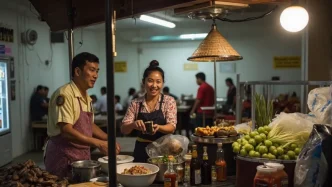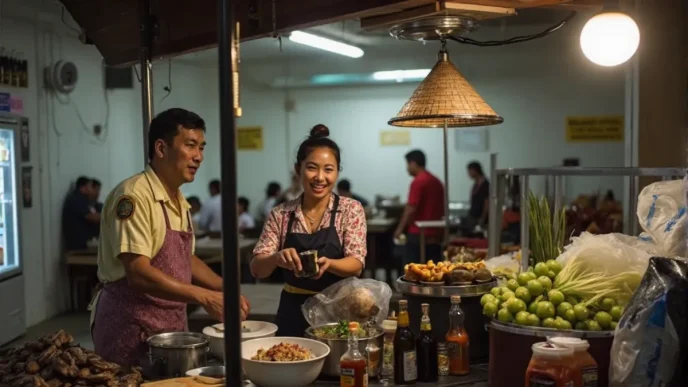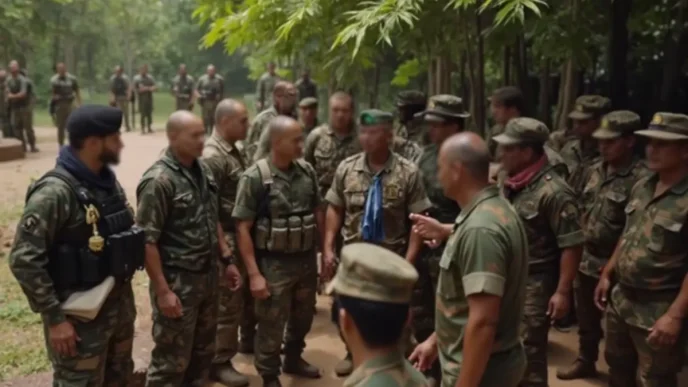Two more bodies were recovered on Monday from the wreckage of a 30-storey building under construction in Bangkok’s Chatuchak district, pushing the confirmed death toll to 43, according to the Bangkok Metropolitan Administration (BMA). The collapse, triggered by a devastating 8.2-magnitude earthquake near Mandalay, Myanmar, on March 28, 2025, has left a grim mark on the city, with 51 individuals still unaccounted for and nine injured.
A Catastrophic Incident
The ill-fated structure, intended to house the State Audit Office (SAO) on Kamphaeng Phet 2 Road, crumbled under the seismic shock, trapping over 100 workers inside. The BMA reported that a total of 103 people were affected by the disaster, a figure that underscores the scale of the tragedy. Rescue operations have been relentless, with heavy machinery deployed to bore through the debris in Zone B until late Monday evening, finally granting access to Zone C where several bodies had been detected earlier.
The two latest victims were transported to the Institute of Forensic Medicine for identification and autopsy, as families wait anxiously for news of their loved ones. The painstaking process of sifting through rubble continues, with emergency teams working against time and fading hope to locate the missing.
Earthquake’s Far-Reaching Impact
The earthquake, centered near Mandalay, Myanmar, sent shockwaves across the region, with Bangkok—over 600 miles away—bearing unexpected consequences. While Thailand is not typically associated with high seismic activity, the country’s capital sits on soft soil that can amplify ground shaking, a factor likely contributing to the severity of the collapse. Structural engineers have raised concerns about whether the building’s design and construction adhered to earthquake-resistant standards, especially given its height and the ongoing work at the time of the disaster.
Thailand’s Department of Disaster Prevention and Mitigation has since issued warnings to review safety protocols for high-rise constructions, particularly in areas vulnerable to amplified seismic effects. The incident has also reignited discussions about regional preparedness for natural disasters, as neighboring countries like Myanmar and Laos frequently experience tectonic activity.
Rescue Efforts and Challenges
Rescue operations have faced significant hurdles, from unstable debris to the sheer volume of material that needs to be cleared. Heavy machinery, while essential, risks further destabilizing the site, forcing teams to balance speed with caution. On Monday, workers drilled through Zone B until 7:10 PM to reach Zone C, a testament to the grueling conditions and complexity of the task. The BMA has coordinated with national emergency services and volunteer groups to sustain the effort, but the emotional toll on rescuers and families alike is palpable.
Public sentiment, captured through posts on social media platforms like X, reflects a mix of grief and frustration. Many have praised the dedication of rescue teams, while others question why such a disaster occurred in a modern metropolis like Bangkok. Some users have called for accountability, urging investigations into the building’s construction permits and safety audits.
Broader Implications for Urban Safety
The collapse of the SAO building is a stark reminder of the vulnerabilities inherent in rapid urbanization across Southeast Asia. Bangkok, a city of over 8 million, has seen a boom in high-rise developments over the past decade, driven by economic growth and population density. However, this growth often outpaces regulatory oversight, leaving gaps in enforcement of building codes. If confirmed, lapses in compliance could prompt a wider reckoning for Thailand’s construction industry, which employs thousands of workers under often precarious conditions.
Experts suggest that the government may need to allocate significant resources—potentially in the range of millions of Thai Baht (estimates suggest 10 million Thai Baht, equivalent to approximately US$280,000 as of recent exchange rates)—to overhaul safety standards and retrofit existing structures. Such measures, while costly, could prevent future tragedies on this scale. The financial burden, however, raises questions about funding priorities in a country already grappling with economic recovery post-pandemic.
Human Cost and Community Response
Beyond the numbers, the human stories emerging from the rubble paint a picture of loss and resilience. Many of the trapped workers were migrant laborers, a demographic that forms the backbone of Thailand’s construction sector but often lacks adequate protections. Advocacy groups have called for better labor safeguards, including mandatory insurance and stricter workplace regulations, to ensure that those on the frontlines of urban development are not left vulnerable.
Local communities in Chatuchak have rallied to support affected families, organizing donation drives for food, water, and medical supplies. Temples in the district have opened their doors as temporary shelters, offering solace to those displaced or waiting for news. These acts of solidarity, while small in the face of such devastation, highlight the strength of Bangkok’s social fabric during crises.
Government and Policy Reactions
The Thai government has pledged a thorough investigation into the collapse, with Prime Minister Srettha Thavisin expressing condolences and promising swift action. A task force has been established to probe potential negligence or structural flaws, though no definitive findings have been released as of this report. The BMA, meanwhile, has faced criticism for delays in updating building codes to account for rare but catastrophic events like earthquakes.
Opposition leaders have seized on the disaster to critique broader infrastructure policies, arguing that public safety has been sidelined in favor of rapid development. If these claims gain traction, the incident could become a flashpoint in Thailand’s already polarized political landscape, where urban planning and economic priorities often clash with grassroots demands for accountability.
Regional and International Context
The ripple effects of the Mandalay earthquake extend beyond Thailand, with Myanmar reporting significant damage and casualties closer to the epicenter. International aid organizations have mobilized to assist in both countries, though logistical challenges persist in reaching remote areas. The disaster underscores the interconnected nature of seismic risks in Southeast Asia, where national borders do little to contain the impact of natural forces.
Thailand has received offers of technical support from Japan, a nation renowned for its earthquake-resistant infrastructure, to assess and rebuild critical structures in Bangkok. Such collaboration could set a precedent for regional partnerships in disaster mitigation, though it remains to be seen how quickly actionable plans can be implemented.
Looking Ahead
As rescue operations press on in Chatuchak, the city holds its breath for news of the 51 still missing. Each day brings a mix of hope and dread, as the likelihood of finding survivors diminishes. Yet, the determination of emergency teams and the outpouring of community support offer a glimmer of light amid the tragedy. For Bangkok, and indeed for Thailand, the path forward involves not just recovery but a fundamental reassessment of how to build safer, more resilient urban spaces in an unpredictable world.














